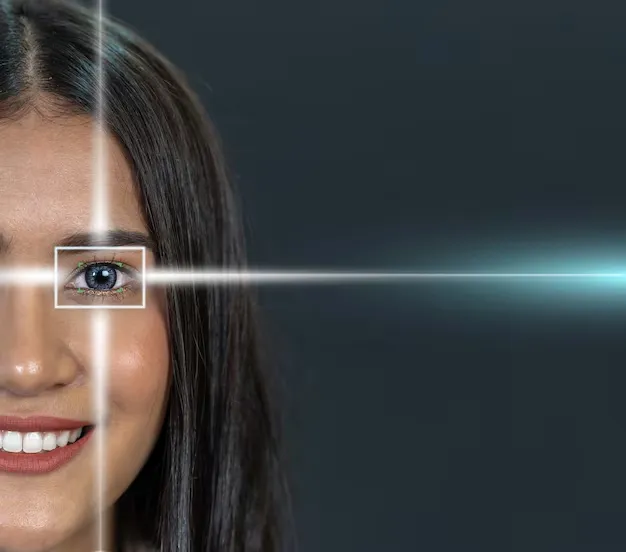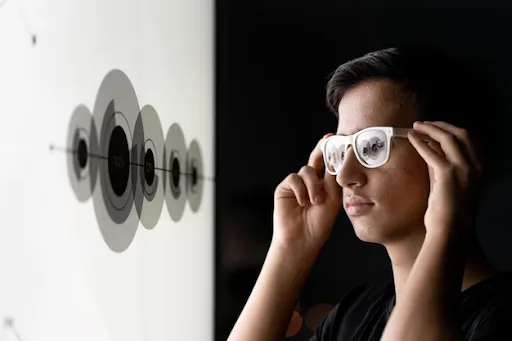Vision and Eye Health
The Science of Peripheral Vision and Why It Matters
FSDAVCFEBFEVSDDVFSD
FSDAVCFEBFEVSDDVFSD
FSDAVCFEBFEVSDDVFSD
What is peripheral vision?
Peripheral vision refers to the ability to see objects outside the direct line of sight. It allows you to detect movement, maintain situational awareness, and navigate your surroundings. While central vision provides sharp detail, peripheral vision offers a broader field of view, which is crucial for activities like walking, driving, and sports.
The human visual field spans approximately 180 degrees, with peripheral vision making up most of that range. However, it is less detailed than central vision because it relies more on rod cells, which detect motion and light changes rather than fine details. Understanding how peripheral vision works is essential for recognizing potential threats to eye health.
Peripheral vision refers to the ability to see objects outside the direct line of sight. It allows you to detect movement, maintain situational awareness, and navigate your surroundings. While central vision provides sharp detail, peripheral vision offers a broader field of view, which is crucial for activities like walking, driving, and sports.

The human visual field spans approximately 180 degrees, with peripheral vision making up most of that range. However, it is less detailed than central vision because it relies more on rod cells, which detect motion and light changes rather than fine details. Understanding how peripheral vision works is essential for recognizing potential threats to eye health.

Why peripheral vision is essential
Peripheral vision plays a crucial role in our daily lives, enabling us to perform simple and complex tasks with ease and safety. It provides awareness of our surroundings without requiring us to move our heads or shift focus, making it essential for activities that demand quick reaction times.
For driving, peripheral vision is vital for detecting pedestrians, cyclists, and approaching vehicles from the side, ensuring lane awareness and timely responses to sudden hazards. In sports, athletes depend on their peripheral field to track teammates, opponents, and the ball simultaneously, enhancing reaction times and strategic decision-making. Beyond these, peripheral awareness is key to maintaining mobility and balance, helping individuals navigate crowded spaces safely and reducing the risk of trips and falls.
Without strong peripheral vision, these activities become increasingly challenging, impacting both safety and quality of life. Regular comprehensive eye exams are essential for detecting changes in peripheral vision and addressing issues before they worsen. Early intervention can prevent further deterioration, ensuring that individuals maintain their ability to perform daily tasks efficiently and confidently.
Conditions that affect peripheral vision

Several eye and neurological conditions can impair peripheral vision, significantly affecting daily life and situational awareness. Glaucoma, a common cause, damages the optic nerve due to increased eye pressure. This often results in gradual peripheral vision loss, which, if left untreated, can progress to tunnel vision or total blindness. Early detection through regular eye exams is crucial for managing and slowing its progression.
Other conditions, such as retinitis pigmentosa, a rare genetic disorder, also lead to progressive peripheral vision loss.

This condition can cause night blindness and difficulties with spatial awareness. Additionally, strokes or brain injuries affecting the visual processing areas can result in hemianopsia, where one side of the visual field is lost. Prompt diagnosis and tailored treatment plans can help minimize the impact of these conditions and preserve remaining vision.
Early diagnosis and treatment are crucial in managing eye diseases and preventing further vision loss. Conditions such as glaucoma, retinitis pigmentosa, and visual field loss from strokes or brain injuries can worsen over time, but with timely intervention, their progression can be slowed. Regular comprehensive eye exams help detect subtle changes in peripheral vision, allowing eye care professionals to implement treatment plans tailored to each condition.
For example, glaucoma can be managed with prescription eye drops, laser treatment, or surgery to reduce eye pressure, thus preventing further optic nerve damage. In cases of retinitis pigmentosa, while there is no cure, treatments like vitamin A supplements, low-vision aids, and adaptive technologies can improve quality of life. For patients with visual field loss due to brain injuries or stroke, rehabilitation therapies such as visual field expansion training may be recommended. Consulting with an eye care professional early on is essential to preserving vision and maintaining independence, as well as enhancing overall well-being.
How to test peripheral vision
Peripheral vision tests are a vital part of routine eye exams, designed to detect early signs of vision loss. A common method is the visual field test, where patients focus on a central point and respond to objects appearing in their side vision. For more precise analysis, advanced tests like automated perimeter are used to map vision loss patterns. These tools enable eye doctors to identify and monitor conditions such as glaucoma and other vision-threatening disorders.
If you experience difficulty seeing objects to the side or have frequent near-miss accidents while driving, it may indicate peripheral vision issues. Early diagnosis can prevent further vision loss and improve your overall safety. Scheduling a comprehensive eye exam ensures a thorough assessment of your peripheral vision and provides personalized recommendations for maintaining eye health. Don’t ignore the warning signs, take proactive steps to protect your vision.
Tips for improving peripheral vision
While some vision loss conditions are irreversible, certain exercises and habits can help strengthen peripheral awareness and improve overall vision efficiency. Eye movement training, such as shifting focus between central and peripheral objects, can enhance peripheral awareness. This practice is especially useful for activities requiring multitasking or quick reactions.
Athletes often rely on peripheral awareness drills, which involve focusing on a central point while identifying objects in the surrounding visual field.
While some vision loss conditions are irreversible, certain exercises and habits can help strengthen peripheral awareness and improve overall vision efficiency. Eye movement training, such as shifting focus between central and peripheral objects, can enhance peripheral awareness. This practice is especially useful for activities requiring multitasking or quick reactions.
Athletes often rely on peripheral awareness drills, which involve focusing on a central point while identifying objects in the surrounding visual field. These exercises improve reaction times and situational awareness, which are essential for performance in sports and other dynamic environments.


Additionally, regular breaks from screen time are crucial. Digital eye strain can negatively impact both central and peripheral vision efficiency. Following the 20-20-20 rule looking at something 20 feet away for 20 seconds every 20 minutes helps maintain healthy vision and reduces strain.
These exercises improve reaction times and situational awareness, which are essential for performance in sports and other dynamic environments.
Additionally, regular breaks from screen time are crucial. Digital eye strain can negatively impact both central and peripheral vision efficiency. Following the 20-20-20 rule looking at something 20 feet away for 20 seconds every 20 minutes helps maintain healthy vision and reduces strain.
When to see an eye doctor
Signs of peripheral vision loss should not be ignored, as they may indicate serious underlying eye conditions that can worsen if left untreated. One of the earliest signs is blurry or darkened areas in your side vision, making it difficult to perceive surroundings. These changes can interfere with everyday tasks and significantly impact safety.
Navigating crowded spaces can become challenging as peripheral vision diminishes. You may find it harder to detect people or objects approaching from the sides, increasing the likelihood of collisions or accidents. This difficulty is often more pronounced in busy environments or areas with low lighting, where peripheral awareness is crucial for movement and balance.
Increased sensitivity to bright lights or trouble seeing in dim conditions is another symptom that signals potential vision loss. These challenges can affect confidence in performing routine activities, such as driving at night or walking through poorly lit areas. Addressing these symptoms early can help prevent further complications and maintain your independence.
Frequent tripping or bumping into objects might seem minor but could indicate a significant problem with peripheral vision. These issues can disrupt daily life and even lead to injuries. Regular eye exams are essential for detecting vision changes early and ensuring timely intervention. Seeking help from an eye care specialist at the first sign of peripheral vision issues is vital. Early detection can slow or prevent further vision field loss, improving your quality of life. Comprehensive evaluations and personalized care plans can help address symptoms effectively, preserving your ability to navigate the world safely and confidently.
Protecting your vision long-term

Maintaining good peripheral vision is a vital aspect of overall eye health, and adopting proactive habits can protect your sight. One key step is wearing UV-protective sunglasses, as prolonged exposure to harmful ultraviolet rays can increase the risk of developing eye conditions like cataracts and macular degeneration. By shielding your eyes from UV damage, you help preserve both central and peripheral vision.

Maintaining good peripheral vision is a vital aspect of overall eye health, and adopting proactive habits can protect your sight. One key step is wearing UV-protective sunglasses, as prolonged exposure to harmful ultraviolet rays can increase the risk of developing eye conditions like cataracts and macular degeneration. By shielding your eyes from UV damage, you help preserve both central and peripheral vision.
Managing chronic health conditions is equally important. Diabetes and hypertension can contribute to vision problems, including damage to the blood vessels in the eyes.
Managing chronic health conditions is equally important. Diabetes and hypertension can contribute to vision problems, including damage to the blood vessels in the eyes. Regular monitoring and controlling these conditions through a healthy lifestyle and prescribed medications can significantly reduce the risk of vision loss.
Routine eye exams are essential for early detection of potential issues. By following your eye doctor’s advice and scheduling regular check-ups, you can catch problems before they worsen, ensuring timely treatment to protect your peripheral vision and overall eye health.
Regular monitoring and controlling these conditions through a healthy lifestyle and prescribed medications can significantly reduce the risk of vision loss.
Routine eye exams are essential for early detection of potential issues. By following your eye doctor’s advice and scheduling regular check-ups, you can catch problems before they worsen, ensuring timely treatment to protect your peripheral vision and overall eye health.
Final thoughts
Peripheral vision plays a crucial role in daily activities, from ensuring safety while navigating crowded spaces to enhancing performance in sports and other dynamic tasks. It allows you to detect motion and objects outside your central focus, contributing to spatial awareness and reaction time. However, peripheral vision can be affected by various conditions, such as glaucoma or retinal disorders, which may lead to difficulties in everyday tasks and decreased quality of life if left unaddressed.
Recognizing early signs of peripheral vision changes, such as trouble seeing objects to the side or frequent accidents due to missed visual cues, is essential. Prompt action, including a comprehensive eye exam, can help detect and manage underlying issues before they progress. Kleinwood Vision offers expert evaluations to safeguard your eyesight. Contact us to schedule your exam today to maintain healthy peripheral vision and ensure your eyes stay in optimal condition for years to come.

Contact Info
Hours of Operation
Mon - Fri | 9:00 AM - 5:00 PM
Sat - Sun | Closed
Holiday Hours: We are closed for the following holidays: New Years Day, Memorial Day, Independence Day, Labor Day, Thanksgiving Day, Christmas Day
© 2025 Kleinwood Vision. All rights Reserved.


